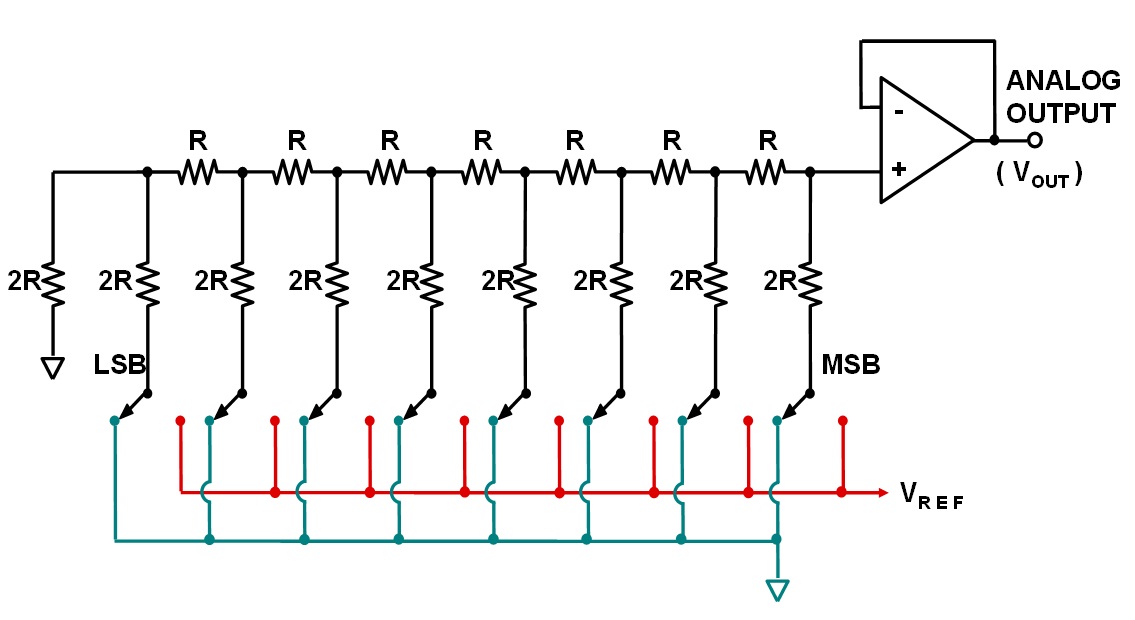D/A conversion
PESIT, BSC
Every time I think of LD!
So, what can we do?
Lets make it
FUn ! :-) :-)
[ yes, that's possible! ]
Happy times ahead . . .
D/a converter
Wanna see something cool?
Go down!
Go down!
A sneak-peak with Dr. Collin
Let's get started!
Binary
equivalent
weight
truth table for
3-bit binary signal

-
Sum of binary weights should be equal to one. (1)

-
General formula for binary weights associated with LSB:
Time for a question?
Q. What's the binary equivalent weight of each bit in a 4-bit system?
Hint:
Answer: 1/15 , 2/15, 4/15 and 8/15
Resistive Dividers
What should it produce? Exactly this: 

How does it work?
Nothing unusual, the resistors come into play!

- Convert LSB(s) to their analog value. ( 001 = 1, 010 =2)
- Sum up these analog values.
simple enough, right? ;-)
Milliman's theorem
"The voltage between the ends of the circuit is equal to the total current entering the supernode divided by the total equivalent conductance of the supernode". Apply the formula for the circuit above.
Binary Ladders
???
 Resistive network!
Resistive network!
Watch This!
A 3-bit DAC in action. :-)
Lets continue with ladder networks...

ladder output voltages

Now, we bring in the
OP-AMPs
Any idea why?
Obvious, isn't it!
to
by now,

Relax with recap!
-
Binary weights
-
Resistive dividers
-
Binary ladders
AND, WE'RE DONE!
But before that,
What's the basic difference between analog and digital signals?
Relax! You don't have to answer this one.
Resources
2. Search for more here.
3. Great help from our text by Donald P Leach and co.
A presentation made by Abhiram Ravikumar.
(just in case you forgot! ;-) )
Visit: http://techroars.blogspot.in
dac
By Abhiram Ravikumar
dac
- 4,152








